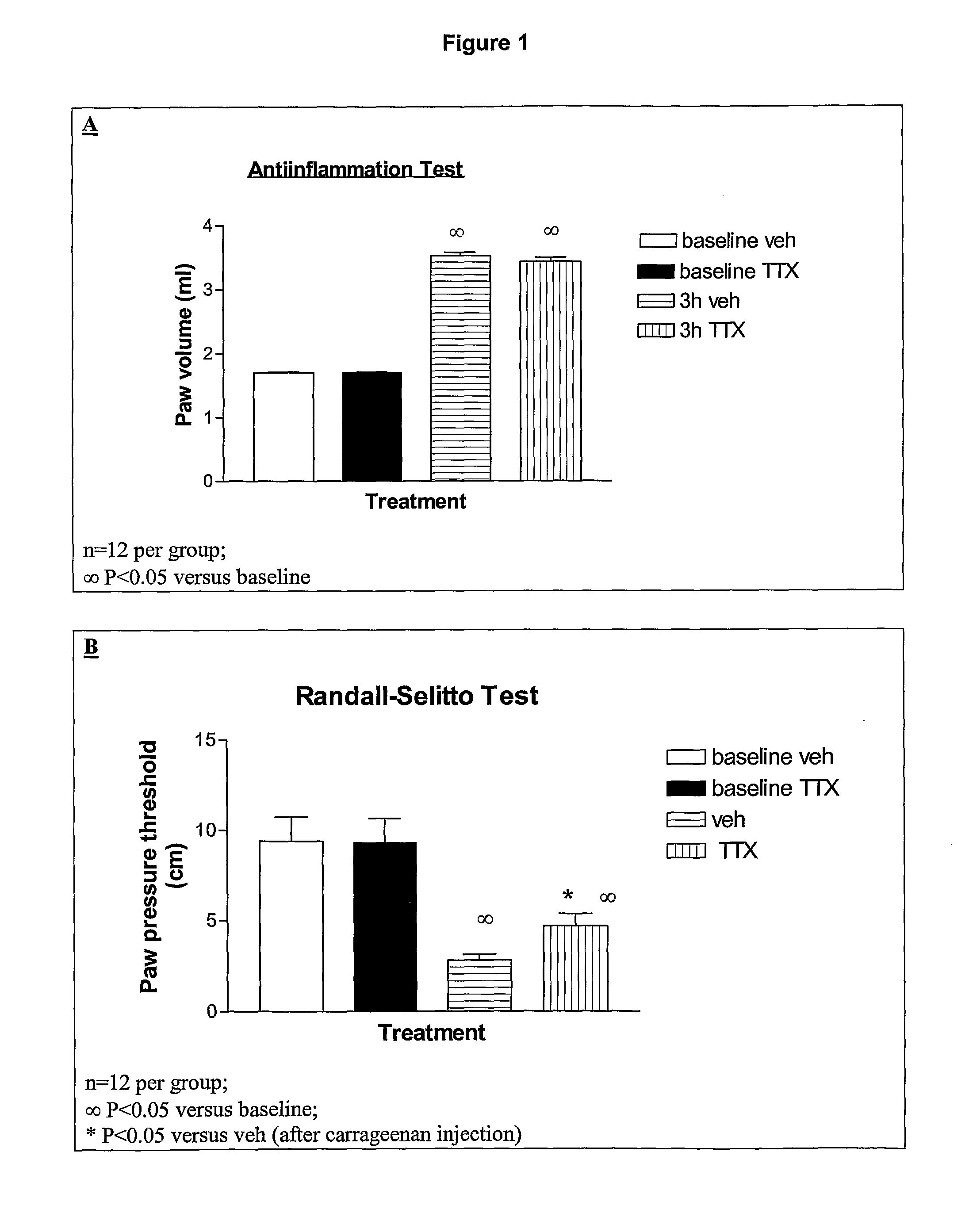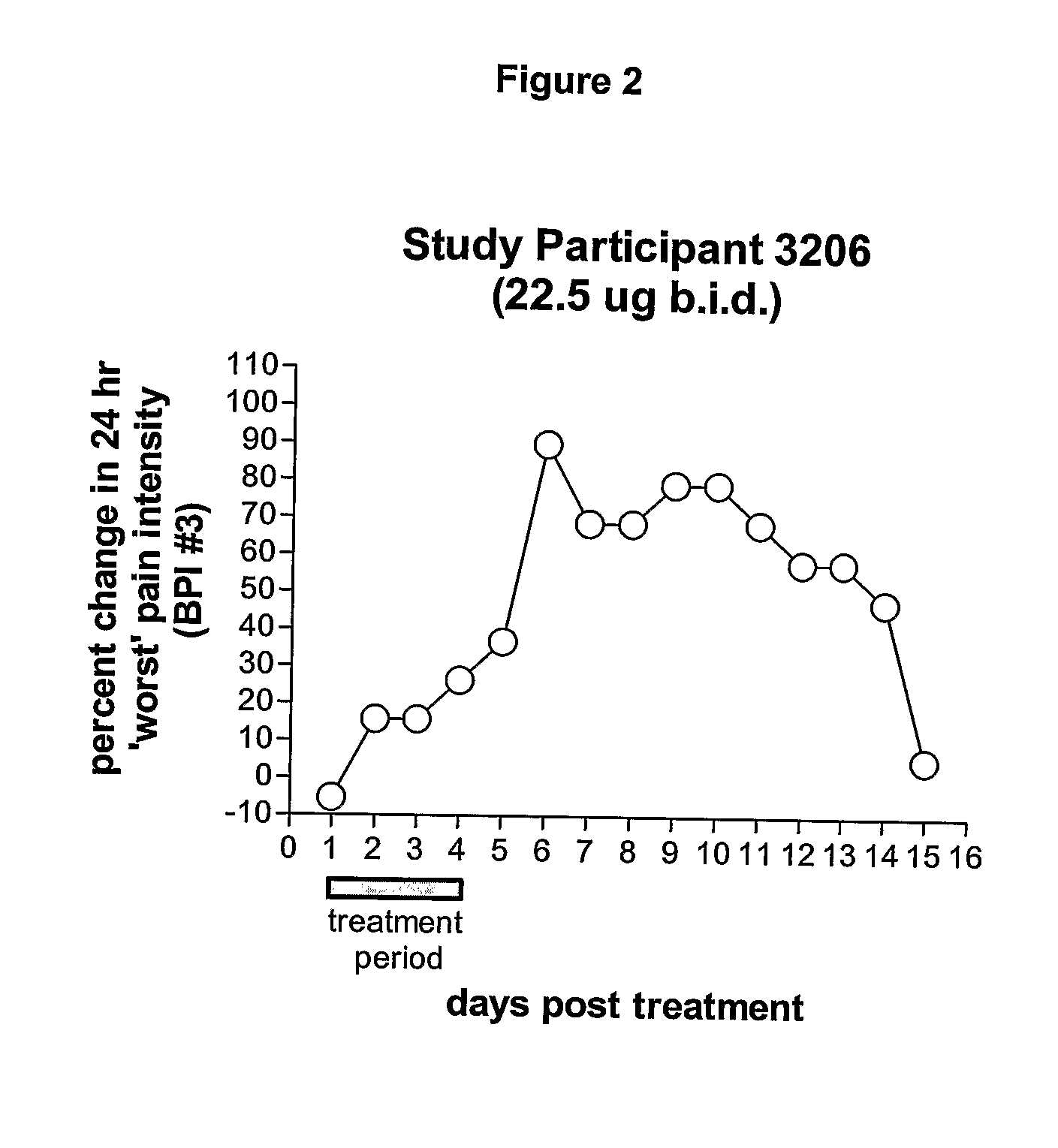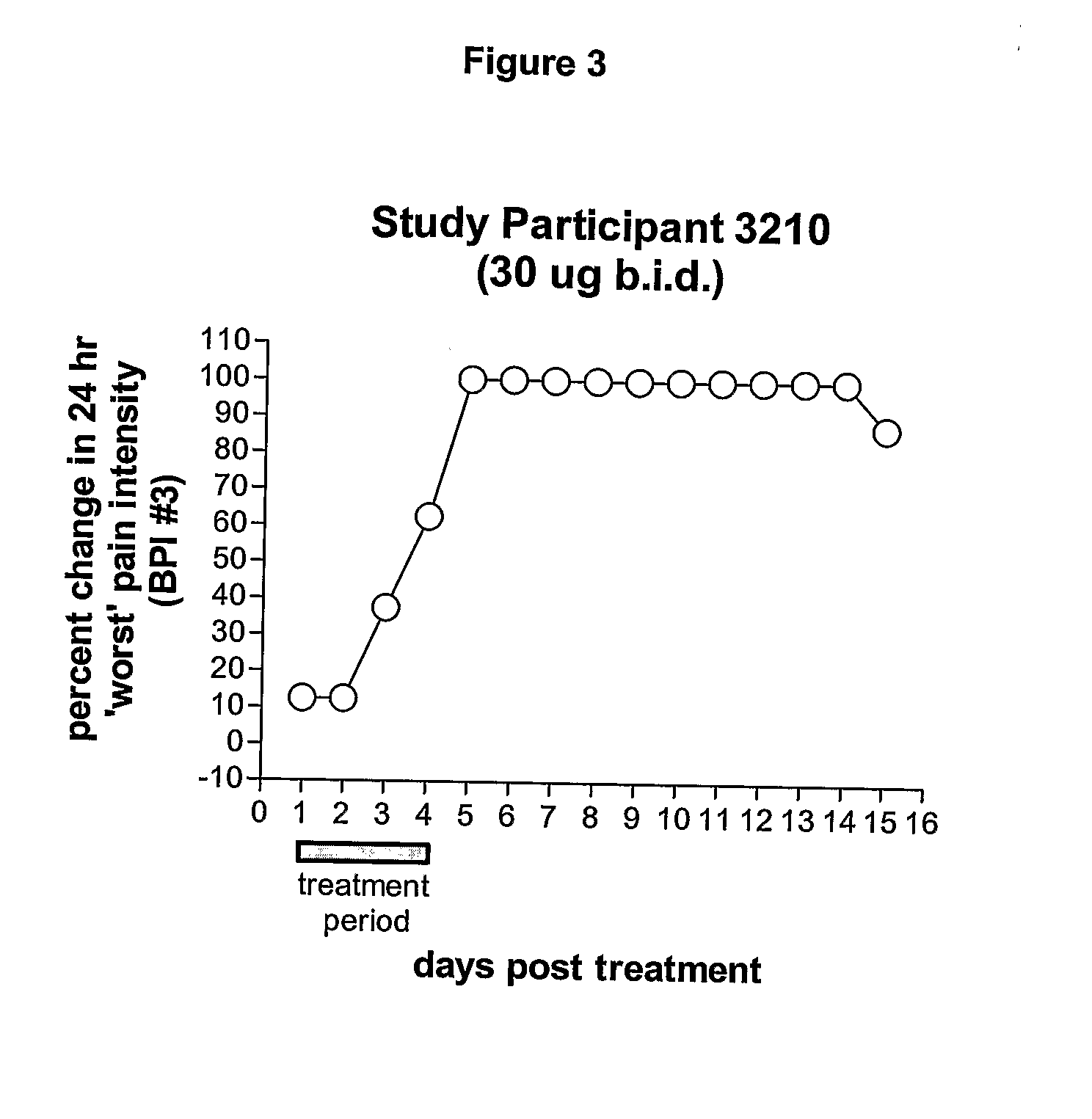Use of sodium channel blockers for the treatment of visceral pain or pain caused by cancer treatment
a sodium channel blocker and visceral pain technology, applied in the direction of biocide, drug composition, nervous disorder, etc., can solve the problems of inability to control the pain of one medical condition, short time, and severe pain, and achieve the effect of reducing the pain of one patient, reducing the pain of the other patient, and improving the quality of li
- Summary
- Abstract
- Description
- Claims
- Application Information
AI Technical Summary
Benefits of technology
Problems solved by technology
Method used
Image
Examples
example 1
[0082]In this model, the effects of morphine and TTX were compared. Morphine was administered at 1.25, 5, or 10 mg / kg and tetrodotoxin at 0, 3, or 4 μg / kg. The chemicals were administered subcutaneously to groups of 10 male mice. Thirty minutes later, 50 μL of a capsaicin solution (0.3% in water solution) was delivered to the colon via the rectum. The capsaicin-induced nociceptive behaviours exhibited by the mice were counted for a 30-minute period. The frequency of nociceptive behaviors was compared to that of a control group receiving only the capsaicin solution.
[0083]The effects were as follows:
[0084]Morphine (1.25, 5 and 10 mg / kg, s.c.): 54.8*, 92.5* and 100*%
[0085]Tetrodotoxin (3 and 4 μg / kg, s.c.): 30 and 58.8*%
[0086](*: p<0.05, Anova followed Dunnett's test versus vehicle)
[0087]The results of the study suggest that a dose of 4 μg / kg of tetrodotoxin was as effective as 1.25 mg / kg of morphine.
example 2
Thermal Stimulus
[0088]Tetrodotoxin was active in postoperative pain in rats, after acute or 4 days of pre-treatment.
Acute Treatment
[0089]For this model, an incision was made in the hind paw of the rats. One hour later, tetrodotoxin was administered subcutaneously (0, 1, 4, or 8 μg / kg) to groups of 12 male rats. Thirty minutes later, a thermal stimulus was applied to the incised paw and the latency to withdraw the affected hind paw was recorded. The paw withdrawal latencies for each treatment group were measured. The hyperalgesia for each animal was calculated as the percentage of decrease of the latency time of withdrawing the incised versus the healthy hind paw of the same animal. The antinociceptive activity for each animal was calculated comparing its hyperalgesia value with the mean hyperalgesia of the control group (treated with vehicle).
[0090]The ED50 of i.v. morphine in this model was 0.59 mg / kg.
[0091]The antinociceptive activity of tetrodotoxin was 8%, 20% ...
example 3
[0096]Experiments in this model takes the following steps:
a) Quantification of the baseline paw volume (plethysmometry) and baseline nociceptive threshold by the Randall-Selitto procedure (paw pressure) of male SD rats;
b) Drug treatment: TTX (2.5 μg / kg, s.c.) or vehicle;
c) After 1 h: Injection of 1% lambda carrageenan (0.1 mL) into the surface of the right hind paw;
d) Redetermination of paw volume and nociceptive threshold 3 h post injection of carrageenan.
[0097]The result of the paw volume measurement, shown in FIG. 1-A, confirms the inflammatory response to carrageenan. The result of the Randall-Selitto test (paw pressure), shown in FIG. 1-B, shows that the TTX treated rats have a higher nociceptive threshold post carrageenan injection relative to the vehicle treated rats post carrageenan injection.
Clinical Examples
[0098]Patients entered a four to seven day baseline period, following which subjects were admitted to hospital and admitted to a care facility to recei...
PUM
| Property | Measurement | Unit |
|---|---|---|
| volume | aaaaa | aaaaa |
| concentration | aaaaa | aaaaa |
| time | aaaaa | aaaaa |
Abstract
Description
Claims
Application Information
 Login to View More
Login to View More - R&D
- Intellectual Property
- Life Sciences
- Materials
- Tech Scout
- Unparalleled Data Quality
- Higher Quality Content
- 60% Fewer Hallucinations
Browse by: Latest US Patents, China's latest patents, Technical Efficacy Thesaurus, Application Domain, Technology Topic, Popular Technical Reports.
© 2025 PatSnap. All rights reserved.Legal|Privacy policy|Modern Slavery Act Transparency Statement|Sitemap|About US| Contact US: help@patsnap.com



